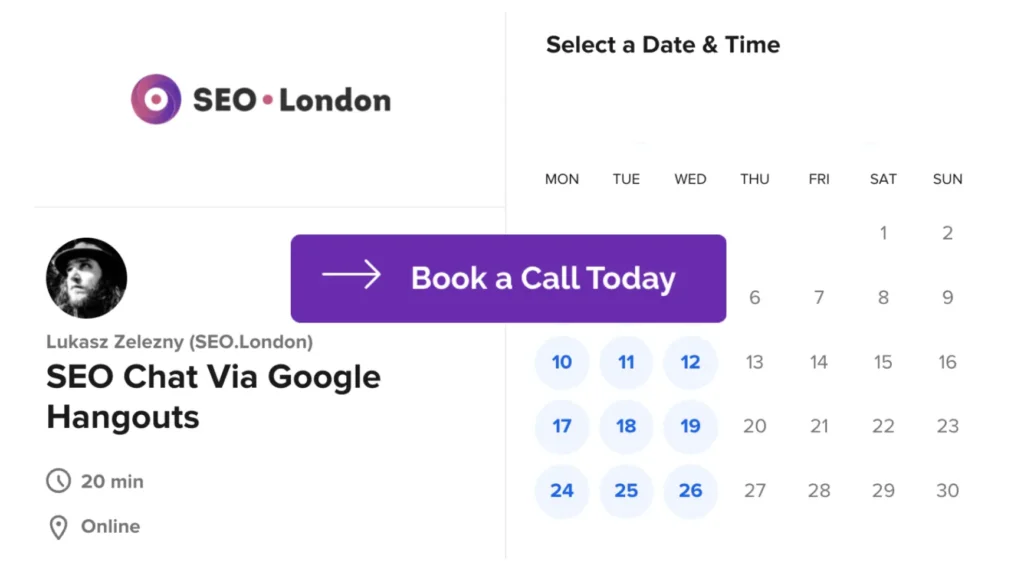https://www.youtube.com/watch?v=xiMAjgceMEo: Video automatically transcribed by Sonix
https://www.youtube.com/watch?v=xiMAjgceMEo: this watch video file was automatically transcribed by Sonix with the best speech-to-text algorithms. This transcript may contain errors.
Hello everyone. So in this video, I just wanted to talk a little about reporting, how to make the reporting a bit more easy to understand and, you know, it’s a very important part of the SEO life. So first of all, how I’m doing this, what we see everyone have own Kung Fu. I will just share my one. I’m going to channels and we are talking here about a see obviously, so we going into organic
Search some website that I own as social media that PL website, which is kind of abandoned because I have no time to deal with this but perfect for a data. So we going back and let’s say we will go up to January.
2018 and we have this exported beautiful. And now we are exporting this to xlsx. So we have here our data. And now the first thing is first thing first, we know that we exported this data from month, January 2000,
And 18. So let’s take January
Till December month year 2018 year, 2019, here we can do growth year over year year 2020 and personal growth year over year or like that.
And let’s copy paste this values. We know that we started from January.
Okay, perfect here is the summary. So what we can see here, we have a data. And obviously first of all, we need to give a bit of context of this data. So what I’m normally doing, I’m just calculating growth year over year.
So I can see that generally. True whole 2019 growth year over year looked like I was delivering between, I can go around 88 percent growth. Yeah and then we have year 2020 and here I can measure this similar way.
So, we had
61% and probably later, we started declining in June and so on. And so, here is October, October is not finished yet. I had this data is only for first 20 21, 21 days. So, let’s divide this by 21. We have a daily roughly daily estimated traffic, and let’s multiply this by 31 days in October. So, when we will remove the symbols then,
Can see that there should be 38 percent decline, 5800 78 and based on this I can calculate what was the average decline in last three months. So let’s take some of this /. Some of this.
– 1 so it’s 36 37 percent let’s say thirty seven percent and I know that what I should expect is this traffic plus this multiplied by minus 0.30 seven.
And like that.
So this is very simple but you don’t need to be here. Like, you know,
A scientist to do some meaningful things and obviously, what is great. It is to take this chart and put this into to take these numbers and put this into chart. So what we see here, always use like organic traffic, monthly 2018 2020 because someone who will be reading that report may not know what you mean and and
That’s why it’s very important that everything will be here written. So we can do this like that and we can say with estimation. So that means that we estimated last last three months of the year, October November, and December. So we have this also, what I suggest you to do it is
Try to do this like that. It’s very nice to add this smooth, smooth line everywhere and markers markers should be automatic.
And it’s good to have them on everything. If you feel that it’s appropriate, you can add some of the labels but be careful with that because that can that can make the whole. You see. Like, the whole chart is starting to be super busy and we see if you will not add them, then there is no.
Amma. Yeah, people still will know what’s going on and then potentially some of you will take this and we’ll be using this in your presentation and it’s super super super critical to adding the presentation. Some bullet points that are describing what’s going on. Now what we can add from what we see here is like year 2020 or meat of the meat
20/20. Massive decline.
Of organic traffic values behind year, 2019? Yeah, I’m just adding this to the spreadsheet, but you can obviously add this into your, into your PowerPoint or whatever you use in there.
Meet 2020. Yeah. Another thing we can see here is that your 2020. Okay. What else we can say? Here it is that
For example, decline in 2020, monthly basis around.
40%.
Forty percent year over year. Yeah. And now if you will send this to your client or your CEO, then they know something, but they will. First of all you are strictly on numbers. There is no faff. There is no like we think we’re doing good or we think we doing quite ok, but we could do better. That means nothing.
That’s why this series is called, No faccio. And what else you can do, what is really good action re-up, optimi of optimization of top 20 pages to mitigate. I don’t even know if this is correct dramatically, but who cares? I’m an NCO not linguistic not linguist. Mitigate
Drop of organic traffic and that’s one thing. And then you can also do another thing. And this is what I’m doing for my clients. So when you are reporting about SEO AKA search engine, optimization year 2018 year, 2019 year 2020 and take a look here is organic traffic when you have
This, you can go here and you can summarize this
Summarize that
And summarize that.
And now this is really beautiful.
Because we can go here.
And we can say that, despite from the fact that this monthly chart looks really bad. Like I said, this website, social media would peel been kind of abandoned. I was not doing much there, so this is not a surprise for me. But let’s say, you may join the company somewhere in September, October of next year, and you will see something similar. And this is definitely the kind of a hero moment for you. Because you can say, like, listen,
You have a problem here, but I’m your SAS SEO and I’m going to fix this. Just give me a bit of time. So you can take this and this is yearly basis and we can put this bars, super nice bars and we can even do this better. We can take this and we can put this as
Once again.
Like that. So we can add here that allow bells. And here, we can put organic traffic yearly, 2018, 2019. Well, if estimation
Almost. So we will make this smaller
We can put this numbers position into inside and, or base inside base. We can make them white. And I will tell you why I’m doing this because here we want also to add data lab lovers and we don’t want to make this actually you see, they are still not perfect so we can put them in the middle Center.
Boom. Now it’s great now, it’s awesome. So you can see here this chart. And again, you can say here, couple of lines, for example, organic traffic, decline, or expected decline, actually not the client organic traffic growth between 2018. And 2019 was a
83% from 47k 286, okay? And then organic traffic growth between 2019 and 2020 was only the nine percent from 86 K2, 94k due to to meet of the Year drop.
And that’s it. Action mitigate drop until until end of the year, using snapshot snapshot optimization.
Action working closer.
To content writers to deliver more relevant content based on Gap analysis.
Already delivered, let’s say, yeah, obviously that’s all hypothetical. And now when your CEO or your client, or your CMO, or anyone who reporting or who you are responsible against a new, taking accountability for a CEO. When you saw, when you showing something like that, when you show a slide, which will contain, this then is brilliant. It’s brilliant. You have bullet points. You have
Kind of interpretation what is here on the chart? What else you can do? Very quickly here and I think, this is also quite sexy way of showing showing data. You can do something like that and like that and like that. And take a look, we will take here, actually, we could do this a different way but doesn’t matter smooth line.
Marker. Yes, option automatic update. Data labels.
Not like that.
Okay, perfect. Now, just to make sure that we are not having this super clunky.
We will put this.
Inside Center. And this also make a bit smaller.
Actually Center is not the best because here, this one are like on the center. What you can do here? What is a kind of a trick? You can try to change the scale here and let’s say the lowest value. Okay, let’s put here. Minus 3.
Okay, and then three. So you can see that now that this chart is kind of
It kind of looked like something that you can read. Yeah, I also like this dark chart, somehow. I don’t know why maybe because I know that nobody is, will be printing this and we’ll save some trees numbers in the, in the center, and we will make this a bit different size. So, six, let’s say, okay, so wheat and then here, six
And now you can see nicely the same organic traffic. However now you can see this only year 2000 2020 and the growth to previous year. So I would like also to add here, maybe one more, one more data set which will be
Which will be year, 2019. So we’ll at year 2019.
Not like that.
Your 2020 year to grow and we need to do serious tree. And so you street name is here 2019 and now we have values which is this.
And obviously we need to make sure that this guy is going on the primary axis and it’s not line but it’s what is I cannot hear? Yes. Who said that columns?
Okay perfect and now you can see nicely that. Okay? Year 2000 2020. The blind actually it’s in the wrong order but this is simple to fix. We can go into to select data and we will take this and we’ll put this like that.
Okay, now your 2019. You can see that been here this grey grey grey grey way behind your 2024, half of the year will be in super proud. But then something basically happened, first of all year, 2019 started. Fastly growing. If you will put a trend line here, a trend line, you can see how you know like up is going and then we will add
Trend line here and we will be completely reversed. You see July. It was the moment of truth. So so yes. I will remove this just to make this more clear. So, take a look year. 2019 up to the June. We were delivering less traffic than what we had in year 2020 and you can see here on the orange line that we had 61 person 127 percent. So we more than
All the traffic then we hit for 147 and so on and so on and so on. Yeah. And then finally something happened here and we dropped 13 person behind and we consistently been keeping traffic below 2019 by around 37%. Yeah. So again here, you can add some comments which will be organic traffic until year.
Until June 2020 was growing and growing by over a hundred percent year-over-year, monthly basis.
And then something happened. Obviously, you know, you don’t want to write like that, it’s quite late and I’m a bit tired. You can write for example due to organic due to Google, I’ll go up, Dane there was a now go update. Actually I’m not making this up and then link
And because of lack of main ones we lost momentum and traffic started declining, or something, and traffic and traffic started. Declining
And again, like at the end of the day, we will still shoot deliver 9% growth. However, we could deliver much more if we would take care properly about the website. So I’m intentionally showing showing you website that have a crappy metrics and yeah I hope and of the 2021 I will be able to show you something something better. So that was about reporting. And again that was me look as the lesson is, you don’t London. If you have any questions put this into comments if you have
Have if you want to contact me, find me on LinkedIn. Find me on SEO that London. And yeah, this is pretty much where we are at the moment. Thank you very much. Bye.
Sonix is the world’s most advanced automated transcription, translation, and subtitling platform. Fast, accurate, and affordable.
Automatically convert your watch files to text (txt file), Microsoft Word (docx file), and SubRip Subtitle (srt file) in minutes.
Sonix has many features that you’d love including upload many different filetypes, secure transcription and file storage, automated subtitles, world-class support, and easily transcribe your Zoom meetings. Try Sonix for free today.




